For reefs that have been severely impacted by human impacts or natural stresses that have not recovered naturally, actively restoring or rehabilitating them may be necessary to help them recover. Restoration or rehabilitation efforts should involve both “transplanting” coral species that have been killed off as well as removing the stresses that have prevented the reef from recovering on its own. Transplanting corals typically involves growing coral fragments in nurseries such as those being established as part of the Blue Project in several locations in The Bahamas. Experimental reef restoration that we have conducted in Abaco, however, indicates that several factors may inhibit the survival of transplanted corals. One factor is damage by humans who may break or kill parts of transplanted corals though contact during diving or snorkeling. This issue is best addressed through education. Other factors may also affect the survival of transplanted corals. Natural predators on corals, particularly elkhorn and staghorn corals that are often the focus of restoration activities, can kill transplants and prevent restoration activities from being effective. One of the main predators on these species is small (typically 1-2 inches) snail that aggressively feeds on both species – Coralliophila abbreviata.
This snail eats a variety of corals, but tends to prefer elkhorn and staghorn coral. Both coral species have been decimated to the point where these once dominant species are now considered endangered species. When the snails find remaining colonies of this coral, they tend to aggregate in clusters to feed on the living tissue of the coral. When these corals were abundant and colonies were large, predation by these snails was spread over a large population and overall colony growth was likely much greater than loss due to predation. Now, however, these snails pose a threat to the recovery of these species. Because elkhorn and staghorn corals transplanted from nurseries are usually put in areas where they once thrived, but are now rare, and transplanted colonies are relatively small, they are particularly vulnerable to snail predators.
Photo 1: Coralliophila abbreviate on Elkhorn coral. The golden colored area of coral is living coral tissue and the white area has been consumed by snails. Photo credit: Tanya Kamerman, Disney.
With funding from the Blue Project and the Disney Worldwide Conservation Fund, we have begun to examine means of controlling predatory snail populations at restoration sites and find ways of keeping them off transplanted corals until they have a chance to grow. In March 2014, these experiments began in The Exuma Cays Land and Sea Park (a site where coral nurseries and reef restoration activities are being conducted as part of The Blue Project) to test different barriers to snail movement. PVC pipe sectioned into 1-2” wide rings and covered with different types of antifouling bottom paint were epoxied to the substrate and several Coralliophila abbreviata were placed in each one to see if they could escape to feed on nearby corals. In initial experiments, snails readily escaped from control rings (unpainted PVC), but did not escape from rings coated in bottom paint highest in cuprous oxide, an antifouling compound that prevents invertebrates such as mussels and barnacles from attaching. Rings coated in this antifouling paint may be places around transplanted corals to give them a few years of growth free from snail predation. Additional experiments were deployed to examine the effect that Cuprous oxide based bottom paint has on coral growth and survival and examine any other impacts that this form of snail barrier may have.
Photo 2: A fragment of elkhorn coral being grown within a snail barrier ring to determine if the barrier affects the growth and survival of corals. Photo credit: Krista Sherman, Bahamas National Trust.
While the barrier approach to giving transplanted corals a “headstart” may help increase coral survival rates and speed reef recovery, finding natural ways to control snail predators is preferred. Over the next 2-3 months, experiments will be conducted to examine what species that prey on snails may be able to control populations of Coralliophila abbreviata populations at restoration sites. Predators that feed on snails and are potentially capable of controlling C. abbreviata populations include Caribbean spiny lobster, octopus or porcupinefish. These experiments will provide valuable insights into reef restoration efforts to improve their long-term efficacy.

